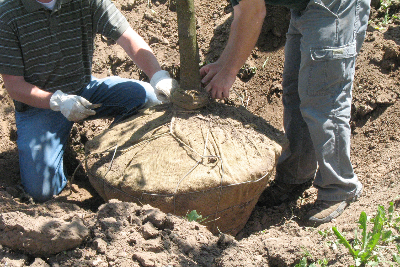Ask an Expert: Three Tips for Tree Planting
 Trees are an integral part of landscaping, and it’s important to know the basics of starting them out right so they will flourish for many years to come. Here are answers to three frequently asked questions about tree planting.
Trees are an integral part of landscaping, and it’s important to know the basics of starting them out right so they will flourish for many years to come. Here are answers to three frequently asked questions about tree planting.
Q: When is the best time of year to plant?
Trees are best planted when they are still dormant with tight, unopened buds in the early to mid-spring after the soil has thawed. Cool temperatures and good soil moisture in the spring help trees get established. Fall planting also works well for many species, though watering is critical if the fall is dry. Summer planting of balled-and-burlapped and container plants can be successful, though hot temperatures, dry conditions and non-dormant trees make good care especially important and survival less sure. Bare-root trees should only be planted in spring while still dormant.
Q: Which type of tree is best?
Landscape trees and shrubs can be obtained in four basic types: balled and burlapped, container/potted, bare root and tree spaded. Each type has advantages and disadvantages, and none is ideal for all situations. Bare-root trees have the most naturally formed root system and are less expensive, but they are not commonly available from nurseries. Balled and burlapped trees work well because they have been grown for several years in soil and are more likely to have a well-distributed root ball than potted trees. Potted or containerized trees are most likely to develop root system problems such as girdling roots and buried root collars. Spaded trees grow well but are not always available.
Q: How large does the root ball need to be?
All four types need to have an adequate root system. A good rule of thumb is that the root system, root ball or container diameter or spread should be 10 to 12 inches for every inch of stem caliper (diameter at ground-line just above any basal swell). Therefore, a 3-inch caliper tree should have a 30 to 36-inch-wide root ball as a minimum. Root ball depth is not as critical as width, but should be deeper for larger trees.
For further information on planting trees and general tree information, visit forestry.usu.edu.
By: Mike Kuhns, Utah State University Extension forestry specialist, 435-797-4056, mike.kuhns@usu.edu


 Utah 4-H & Youth
Utah 4-H & Youth